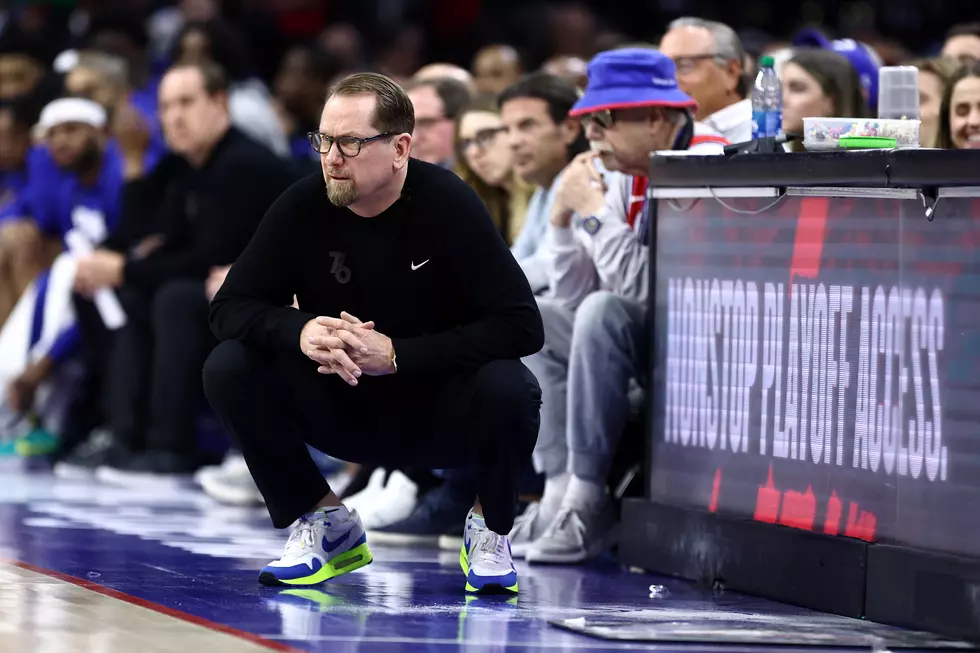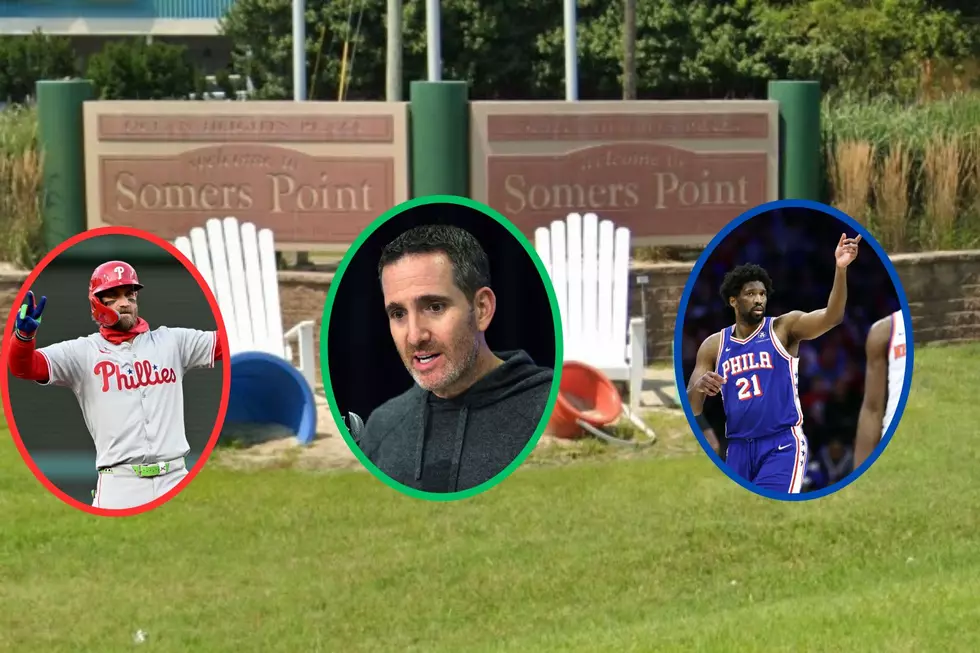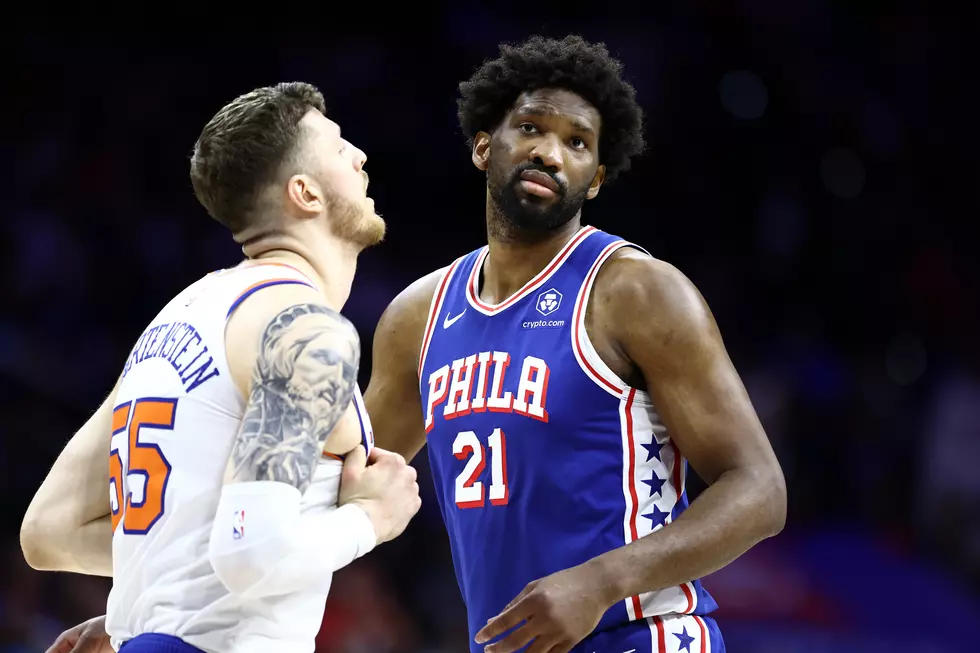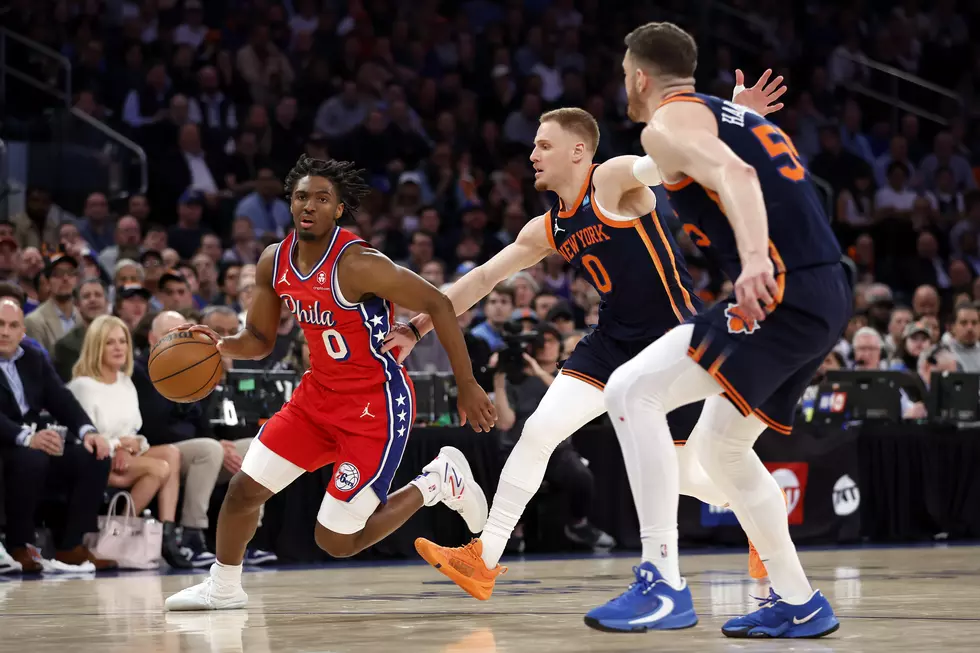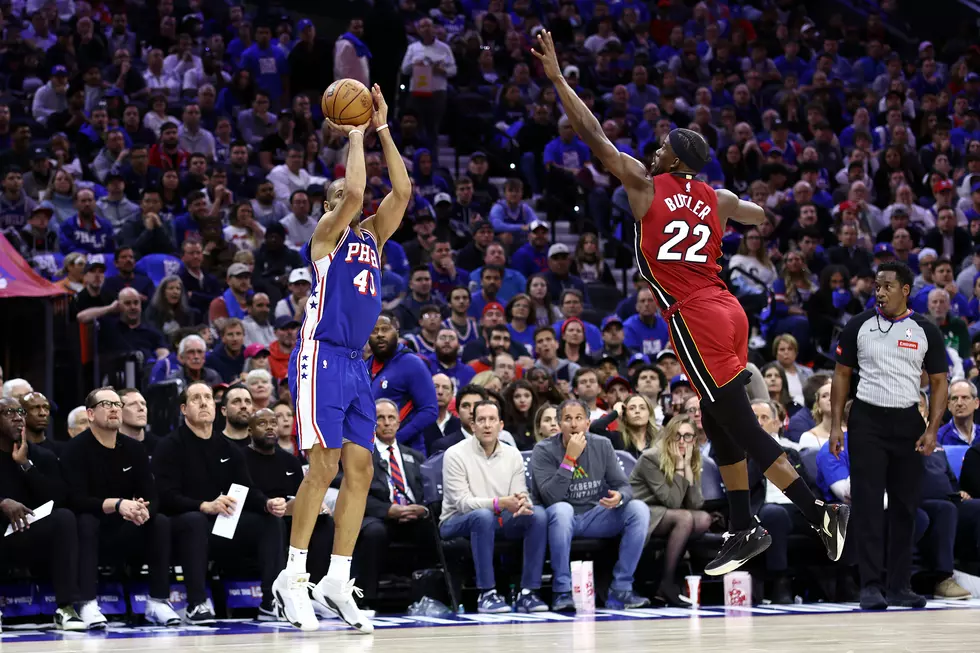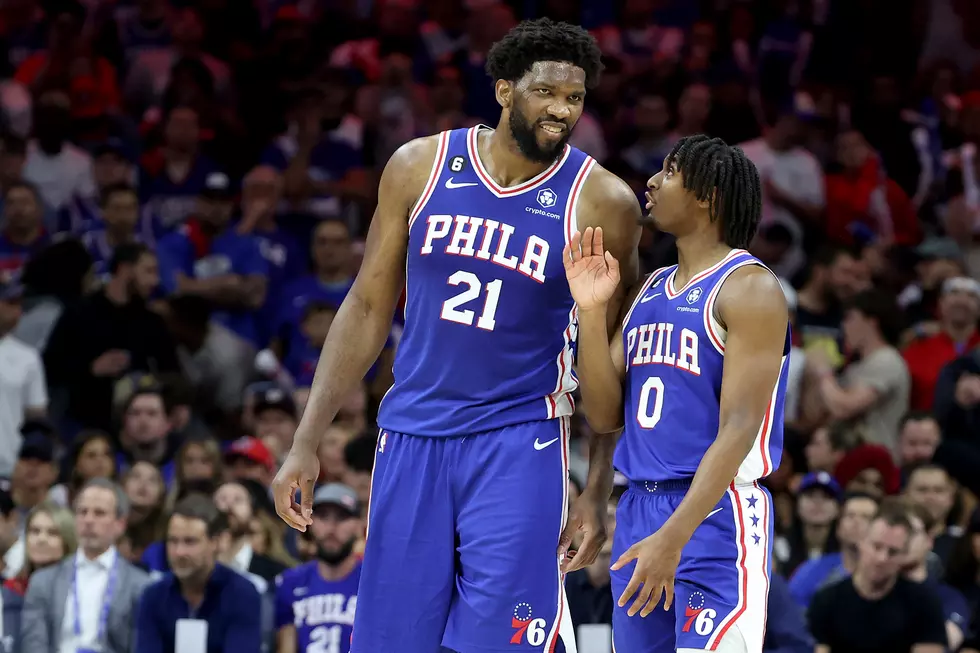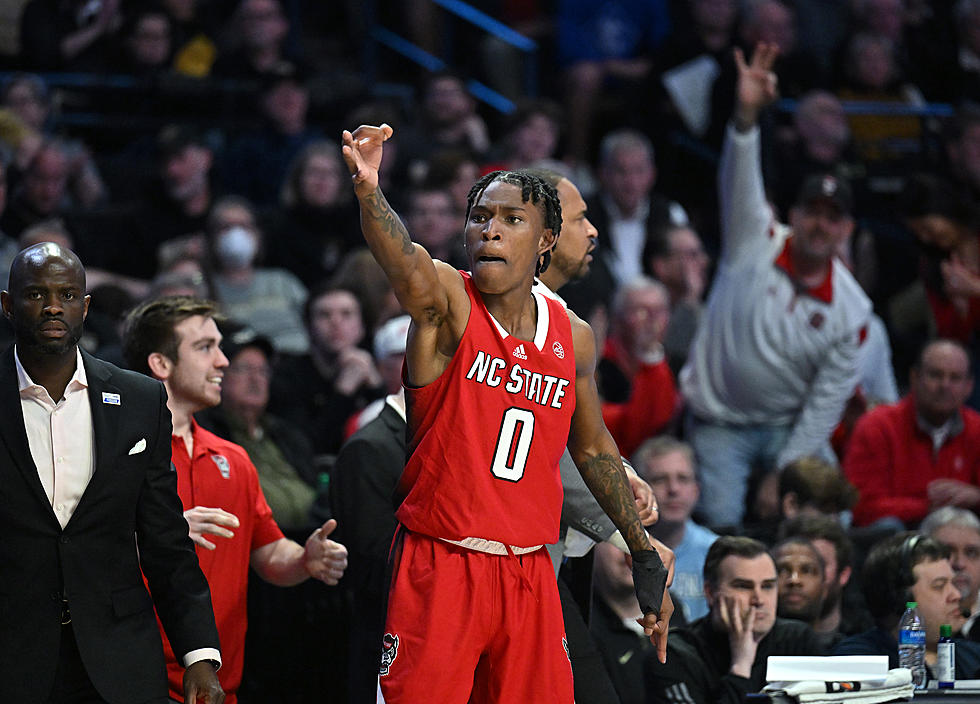
Can Terquavion Smith help the Sixers immediately?
The Sixers' draft night marked the start of a 2023 offseason filled with fan outrage.
It just wasn't about a disagreeable draft selection they made.
Rather, it was about the lack of a pick to use.
For the first time in their history as a member of the NBA, the Sixers had no stake in the draft. But, that didn't mean they went to bed empty-handed that night. Shortly after the final pick, the Sixers added multiple incoming rookies on non-standard contracts. One of those pick-ups was Terquavion Smith, a 6-foot-4 guard out of North Carolina State.
Smith stood out in the NBA's Salt Lake City and Las Vegas summer leagues, showing that he was the most ready to contribute of the Sixers' two-way signings on draft night.
The only questions are: which skills will translate immediately? What should you be skeptical about? What will need the most work?
Which skills will translate immediately?
A 37.8-percent three-point shooter on more than seven attempts per game in summer league, Smith was perfectly comfortable letting it fly both off the catch and off the dribble. His mechanics support the confidence and the efficiency. His release is above the head and quick, there is no wasted motion, and the ball sits on a lofty arc as it travels from his hands to the basket.
Smith is a cerebral ball-handler, adept at reading defensive coverages and reacting appropriately:
As a shooting guard with ball-handling skills, his opportunities might boil down to catch-and-shoots and occasional decision-making freedom early on. In the play above, the ball defender goes under the screen and the big doesn't step up to contest on the perimeter. Smith knows he has to punish his man for going under by pulling up for a three.
That's an easy on-the-fly decision for him to make because he's a confident and capable shooter.
But, his scoring package transcends versatile perimeter shooting. Smith is at his best pushing the pace. Perhaps his best skill is assessing what's in front of him as he accelerates with the ball in his hands:
As Smith progresses down the court, he notices that Johnny Juzang is standing upright on flat feet and has his hands down by his waist. Recognizing that Juzang is neither in a defensive stance nor in a position to confront the ball, he accelerates to a spot before crossing over to get his defender off balance. Now that he's compromised, Smith merely has to clear Juzang from his path. His arms down, Smith changes hands above his head as he quickly shifts directions, using a euro step to blow by Juzang on his way to a layup.
Smith doesn't just put that pace to work for the sake of scoring. He leverages the pressure his speed puts on defenses to create open looks for teammates:
Smith's combination of floor vision and speed make him a significant threat in the open court. If he sees an opportunity to feed a teammate an open shot in transition, he's going to act on that look. As the Utah Jazz are reeling to get back on defense, Smith spots Ricky Council IV lurking in the corner. But, in order for Council to cut to the rim, the white jersey in the middle has to stay lifted above the restricted area. So, Smith weaponizes his speed, bursting down the middle of the floor in an effort to put pressure on the interior. That pressure keeps Council's cutting lane open, and Smith lobs the ball his way for a dunk.
What should you be skeptical about?
Another of Smith's skills inspires great confidence that he can become a crafty offensive player in time, if not immediately. He has a knack for slowing the game down as he's attacking, navigating multiple defenders as he finds a way to score through traffic:
As crafty as that finish is, it requires significant body control. Not just to fight through the contact, but to kiss the ball so delicately off the backboard as the contact comes. The Sixers listed Smith at 165 pounds when they revealed their summer league roster. They eye test says he needs to do some significant bulking up. Unless he gets ultra creative, it's more than fair to question whether he'll be able to absorb contact on offense and still complete the task at hand.
While it is a fact that Smith is a capable dribbler, finisher, and passer with either hand, his actions don't communicate that he's particularly confident using his left hand. He's a righty shooter and righty attacker. Smith's most accurate passes come with his right hand. When he passes with both hands, he appears to favor his dominant hand. Smith's most aggressive attempts at getting downhill come when he can get to his right. One of his favorite moves is a behind-the-back crossover, bringing the ball from his left hand to his right hand as he launches his attack.
Neither characterization is something that should plague him for the entirety of his career. Smith will get stronger as he develops; he will get more comfortable and powerful going left as he works on his craft. But, as things currently stand heading into his rookie year, you have to question whether he'll be strong enough to play with control at the NBA level and whether he truly believes in his ability to play with his left hand.
What will need work?
Most of Smith's opportunities for growth present themselves quite clearly as soon as the ball is no longer in his possession. Both on offense and on defense. He misses opportunities to cut and relocate when teammates have the ball, opting to take up a holding pattern on the perimeter. You could call that spacing, trying to keep a defender away from the ball so that they can't be tempted to help. But, it equates to basically standing and staring. He's a ball-watcher. But, Smith has to find ways to be effective when the ball is not in his hands. Whether it's screening, cutting, relocating on the perimeter. He has to learn to move without the basketball.
That tendency to appear disengaged only gets worse when he's on defense. Far too often does he get caught in compromised positions:
Part of me thinks Smith misjudges how much margin for error his length and wingspan leave him on defense. Perhaps he feels empowered to gamble or cheat in his help positioning, convincing himself that he can recover in time to stop the ball or contest a shot. But, the play above - a pinch on the driver from the strong side that breeds an open three on the kick-out - is habitual for Smith.
Another part of me is much less generous. There are times when Smith simply doesn't know where to be, mishandling basic defensive principles, or flat-out doesn't seem to care. He's often in poor position, turning his back entirely to an assignment. He will get back-cut, lose a shooter on relocation, or allow an offensive player to crash the glass in search of second chances.
When he's on the ball, Smith is far more engaged. There will be times when a stronger or bigger player just shreds him. That will need to be ironed out at the next level as he gets stronger. But, for now, he is willing and able to pressure the ball, staying in front of assignments and making the simple acts of dribbling and moving miserable. The problem is he's selective in when to apply that pressure, often turning heads as a defender only when he feels momentum building for his team.
The lack of strength will be of particular burden to the Sixers in the early-goings when he's chasing assignments through screens. The last we saw of Smith, he had no chance of chasing offensive players through screens. He got hung up on the contact every time, often surrendering open jumpers or forcing his team into undesirable switches to counter.
Even if the switch doesn't happen, it will compromise Philadelphia's defense. If there's no one there to stop dribble penetration off the catch, someone has to help Smith. As soon as that helper comes over, the Sixers are in rotation and the opposition is on the cusp of getting a great shot.
Even if Smith recovers home in time after being in help or takes a good defensive position on the initial setup, he still tends to compromise his team's defense because he lacks discipline on the perimeter. He jumps at the slightest fake or hesitation, giving the ball-handler an easy route into the paint and pulling a teammate out of position to help.
In fairness, guards aren't typically positive defensive players in their first year or two in the NBA. That is particularly the case when they're coming directly from college. But, Smith will need to spend as much time on the mental as the physical to get where he needs to be defensively.
Perhaps he'll bring enough of an offensive punch to a weakened Sixers team to get some minutes in his rookie year. But, as the years go on, Smith is going to need to bring that defense up several tiers to stick at the NBA level.
Learn about Cape May County's Breweries (Alphabetical Order)
More From 97.3 ESPN
